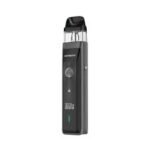When it comes to cooking, tools make a significant difference. One of these essential tools is the basting brush. This kitchen accessory is often used for applying marinades, sauces, or oils to meats, vegetables, and baked goods. While it may seem simple, knowing when to replace your basting brush can impact your cooking. Here, we explore how often you should replace your basting brush and the factors that influence its lifespan.
Understanding the Basting Brush
A basting brush usually has bristles made from various materials, including silicone, natural bristle, or nylon. Each type has its benefits and drawbacks. For instance, silicone brushes are heat-resistant and easy to clean, while natural bristles are often more absorbent. Understanding the materials will help you choose the right one for your kitchen needs.
Signs It’s Time to Replace Your Basting Brush
Fraying Bristles:
One of the first signs that your brush needs replacement is frayed bristles. Over time, frequent use can cause the bristles to wear down. This wear can result in shedding, which can be unpleasant when cooking. If you notice bristles falling out, it’s time for a new brush.
Discoloration:
A well-used basting brush may develop discoloration due to exposure to oils, marinades, and sauces. If your brush looks significantly stained or changes color, it might be time to replace it. Discoloration can be a sign that the brush is harboring bacteria.
Odor:
A clean brush should have no unpleasant odor. If your brush starts to smell bad, it could be a sign of mold or bacteria buildup. Even after thorough cleaning, some brushes can retain odors. If washing does not eliminate the smell, replace the brush.
Difficulty in Cleaning:
If your brush becomes increasingly difficult to clean, it may be time to invest in a new one. Brushes should be easy to wash and sanitize. If food residues stick stubbornly to the bristles, a replacement may be the best option.
Bristle Loss:
Losing bristles while basting can lead to an uneven application of sauces. If you find yourself picking out bristles from your food, it’s a clear indicator that your basting brush is due for a replacement.
Factors Influencing Lifespan
The lifespan of your basting brush can vary based on several factors. Understanding these can help you make an informed decision about when to replace your brush.
Frequency of Use:
The more you use your brush, the more wear and tear it will experience. If you’re an avid cook who uses this tool daily, you may need to replace it more often than someone who uses it occasionally.
Type of Brush:
Different materials have different lifespans. Silicone brushes are generally more durable and resistant to heat and stains compared to natural bristle brushes. If you cook frequently, consider investing in a high-quality silicone option.
Cleaning Methods:
How you clean your basting brush can significantly affect its longevity. Brushes that are not properly washed and sanitized can accumulate bacteria and odors. If you wash your brush immediately after use, it will last longer.
Storage Conditions:
Proper storage is essential for maintaining the integrity of your basting brush. Brushes stored in a damp area can develop mold. Always store your brush in a dry, clean place to extend its lifespan.
How to Care for Your Basting Brush
Taking good care of your basting brush can help it last longer. Here are some tips to keep it in top shape:
Clean Immediately After Use:
After using your brush, wash it with warm soapy water. This helps prevent sauces and marinades from drying on the bristles, making it easier to clean.
Use the Right Cleaning Method:
For silicone brushes, you can use a sponge or cloth. For natural bristle brushes, consider using a gentle scrub brush to remove stubborn residues. Avoid using abrasive cleaners that can damage the bristles.
Dry Properly:
After washing, dry your brush thoroughly before storing it. Excess moisture can lead to mold or bacteria growth. Place it in a well-ventilated area to air dry completely.
Inspect Regularly:
Make it a habit to inspect your basting brush regularly. Look for signs of wear, such as frayed bristles or discoloration. This will help you determine when it’s time for a replacement.
Conclusion
A basting brush is a small yet crucial tool in any kitchen. Knowing how often to replace it can help you maintain food quality and safety. Generally, you should replace your basting brush when you notice fraying, discoloration, odors, or difficulty cleaning. Factors such as frequency of use, brush material, cleaning methods, and storage conditions all play a role in determining its lifespan.
By taking proper care of your basting brush, you can extend its life and ensure it continues to serve you well in your cooking endeavors. Regular inspections and mindful cleaning can help you decide when it’s time for a new brush. Ultimately, investing in a good quality basting brush will enhance your culinary experience, allowing you to achieve delicious results with ease.




